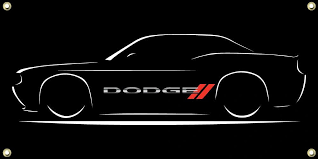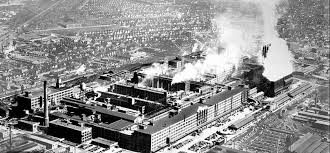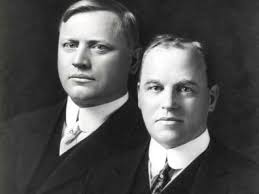
Horace and John Dodge founded the Dodge Brothers Company in Detroit in 1900, and quickly found work manufacturing precision engine and chassis components for the city's growing number of automobile firms. Chief among them were the established Olds Motor Vehicle Company and the new Ford Motor Company. Henry Ford selected the Dodge brothers to supply a wide range of components for his original Model A (1903–04) comprising the entire chassis: Ford needed to add only the body and wheels to finish the cars. Henry offered the Dodge brothers a 10% share in his new company in return for $10,000 worth of goods ($366,240 in 2023 dollars). In 1902, the brothers won a contract to produce transmissions for Ransom E. Olds' company, Oldsmobile upon which they built a solid reputation for quality and service. They rejected a second contract from Oldsmobile in 1903, to retool their plant to manufacture engines for the Ford Motor Company, which would be in debt to the brothers.


The first machine shop where the brothers worked as parts suppliers for Olds and Ford was located at the Boydell Building on Beaubien Street at Lafayette. This location was replaced by a larger facility at Hastings Street and Monroe Avenue, which is now a parking garage for the Hollywood Casino (Hastings Street at this location has been renamed Chrysler Service Drive). By 1910 the Dodge Main factory was built in Hamtramck, where it remained until 1979.
The Dodge Brothers Motor Company was established in 1913 and by 1914, John and Horace designed and introduced the first car of their own – the four-cylinder Dodge Model 30-35 touring car. Marketed as a slightly more upscale competitor to the ubiquitous Ford Model T, it pioneered or made standard many features later taken for granted, such as all-steel bodies. The vast majority of cars worldwide still used wood-framing under steel panels, Other innovations were 12-volt electrical systems (6-volt systems would remain the norm until the 1950s), 35 horsepower engines versus the Model T's 20 horsepower, and sliding-gear transmission (the best-selling Model T retained an antiquated planetary design until its demise in 1927). John Dodge was quoted as saying, "Someday, people who own a Ford are going to want an automobile". The company garnered a reputation for the highest quality truck, transmission, and motor parts supplied to other successful vehicles, and Dodge Brothers cars were ranked second in U.S. sales as early as 1916.
That same year, Henry Ford stopped paying stock dividends to finance the construction of his new River Rouge complex, and the Dodges filed a suit to protect their annual dividends of approximately one million dollars, leading Ford to buy out his shareholders. The Dodges were paid some US$25 million.($700,000,000 in 2023 dollars) They had already earned $9,871,500 ($276,402,000 in 2023 dollars) in dividends making a total return of $34,871,500 ($976,402,000 in 2023 dollars) on their original $10,000 ($280,000 in 2023 dollars) investment. The Ford contract set them up for life, but they never got to spend it.
Also in 1916, the Dodge Brothers vehicles won acclaim for their durability in military service. First with the U.S. Army's Pancho Villa Expedition, during the 1910s U.S. Mexico Border War—the U.S. military's first operation to use truck convoys. General "Blackjack" Pershing procured a fleet of 150 to 250 Dodge Brothers vehicles for the Mexico campaign. Touring cars were used as staff and reconnaissance vehicles. Pershing himself used a Dodge touring car to keep abreast of army columns and control their movements.
During an incident in May, the 6th Infantry reported a sighting of Julio Cárdenas, one of Villa's most trusted subordinates. Lt. George S. Patton led ten soldiers and two civilian guides in three Dodge Model 30 touring cars to conduct America's first motorized military raid at a ranch house in San Miguelito, Sonora. During the ensuing firefight, the party killed three men, with one identified as Cárdenas. Patton's men tied the bodies to the hoods of the Dodges, returning to headquarters in Dublán and an excited reception from US newspapermen.
Subsequently, some 12,800 Dodge cars and light trucks were used in World War I over 8,000 touring cars, as well as 2,600 commercial vehicles, such as screen-side trucks and panel vans—serving primarily as ambulances and repair trucks.
Dodge remained the United States military's primary supplier of light-wheeled vehicles until the U.S. joined the Second World War.
Horace and John Dodge founded the Dodge Brothers Company in Detroit in 1900, and quickly found work manufacturing precision engine and chassis components for the city's growing number of automobile firms. Chief among them were the established Olds Motor Vehicle Company and the new Ford Motor Company. Henry Ford selected the Dodge brothers to supply a wide range of components for his original Model A (1903–04) comprising the entire chassis: Ford needed to add only the body and wheels to finish the cars. Henry offered the Dodge brothers a 10% share in his new company in return for $10,000 worth of goods ($366,240 in 2023 dollars). In 1902, the brothers won a contract to produce transmissions for Ransom E. Olds' company, Oldsmobile upon which they built a solid reputation for quality and service. They rejected a second contract from Oldsmobile in 1903, to retool their plant to manufacture engines for the Ford Motor Company, which would be in debt to the brothers.
The first machine shop where the brothers worked as parts suppliers for Olds and Ford was located at the Boydell Building on Beaubien Street at Lafayette. This location was replaced by a larger facility at Hastings Street and Monroe Avenue, which is now a parking garage for the Hollywood Casino (Hastings Street at this location has been renamed Chrysler Service Drive). By 1910 the Dodge Main factory was built in Hamtramck, where it remained until 1979.
The Dodge Brothers Motor Company was established in 1913 and by 1914, John and Horace designed and introduced the first car of their own – the four-cylinder Dodge Model 30-35 touring car. Marketed as a slightly more upscale competitor to the ubiquitous Ford Model T, it pioneered or made standard many features later taken for granted, such as all-steel bodies. The vast majority of cars worldwide still used wood-framing under steel panels, Other innovations were 12-volt electrical systems (6-volt systems would remain the norm until the 1950s), 35 horsepower engines versus the Model T's 20 horsepower, and sliding-gear transmission (the best-selling Model T retained an antiquated planetary design until its demise in 1927). John Dodge was quoted as saying, "Someday, people who own a Ford are going to want an automobile". The company garnered a reputation for the highest quality truck, transmission, and motor parts supplied to other successful vehicles, and Dodge Brothers cars were ranked second in U.S. sales as early as 1916.
That same year, Henry Ford stopped paying stock dividends to finance the construction of his new River Rouge complex, and the Dodges filed a suit to protect their annual dividends of approximately one million dollars, leading Ford to buy out his shareholders. The Dodges were paid some US$25 million.($700,000,000 in 2023 dollars) They had already earned $9,871,500 ($276,402,000 in 2023 dollars) in dividends making a total return of $34,871,500 ($976,402,000 in 2023 dollars) on their original $10,000 ($280,000 in 2023 dollars) investment. The Ford contract set them up for life, but they never got to spend it.
Also in 1916, the Dodge Brothers vehicles won acclaim for their durability in military service. First with the U.S. Army's Pancho Villa Expedition, during the 1910s U.S. Mexico Border War—the U.S. military's first operation to use truck convoys. General "Blackjack" Pershing procured a fleet of 150 to 250 Dodge Brothers vehicles for the Mexico campaign. Touring cars were used as staff and reconnaissance vehicles. Pershing himself used a Dodge touring car to keep abreast of army columns and control their movements.
During an incident in May, the 6th Infantry reported a sighting of Julio Cárdenas, one of Villa's most trusted subordinates. Lt. George S. Patton led ten soldiers and two civilian guides in three Dodge Model 30 touring cars to conduct America's first motorized military raid at a ranch house in San Miguelito, Sonora. During the ensuing firefight, the party killed three men, with one identified as Cárdenas. Patton's men tied the bodies to the hoods of the Dodges, returning to headquarters in Dublán and an excited reception from US newspapermen.
Subsequently, some 12,800 Dodge cars and light trucks were used in World War I[16]—over 8,000 touring cars, as well as 2,600 commercial vehicles, such as screen-side trucks and panel vans—serving primarily as ambulances and repair trucks.
Dodge remained the United States military's primary supplier of light-wheeled vehicles until the U.S. joined the Second World War.